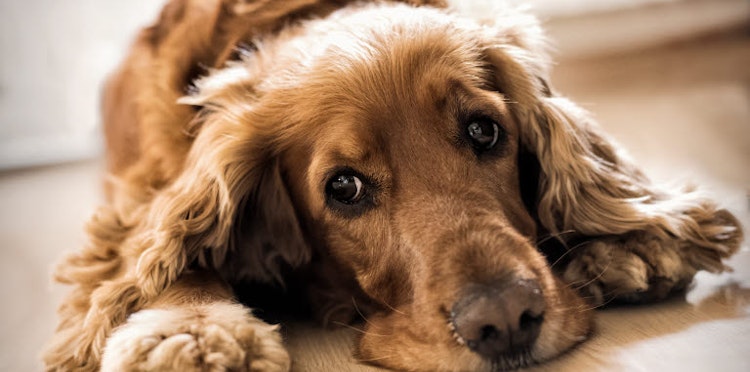What should I do if my dog has diarrhoea?
- Give the dog free access to water
- Keep an eye on the dog drinking and ingesting liquid
- Then give the dog small portions of soft food
- However, a puppy should never starve
Normally, a dog poops formed faeces up to three times a day. In case of diarrhoea in dogs, the faeces can become loose, slimy, yellow and watery. It is not unusual for the stool to be slightly blood-tinged after a few days of diarrhoea. It may take a few days for the stool to return to normal but you should see an improvement with each passing day. Most of the time, the diarrhoea goes away in a few days, but sometimes the vet needs to be consulted.
Smaller portions of junk food can help
If a dog gets diarrhoea, soft food or special diet food can be given. Soft food is easy-to-digest food that can, for example, consist of boiled white fish or chicken and white rice or potatoes. At veterinary clinics and pharmacies there are also special feeds and supplements that can have a positive effect on diarrhoea.
Diarrhoea can cause dehydration
A dog that has diarrhea can lose a lot of fluid and this can lead to dehydration. Young and older dogs can handle dehydration worse than adults. You can check if your dog is dehydrated by feeling the gums, which should be smooth and not sticky. Or by lifting the skin on the top of the head or in the neck, which normally retracts quickly, but when dehydrated, a residual skin fold is formed.
Different types of diarrhoea in dogs
Diarrhoea can be both acute or chronic and there is also a difference between small intestinal diarrhoea and large intestinal diarrhoea. A dog can have both small intestinal diarrhoea and large intestinal diarrhoea.
Diarrhoea in the dog's small intestine
A dog with small intestinal diarrhoea poops large amounts of loose fluid. The general condition may be reduced, the dog may vomit and the appetite decreases. If there is a lot of dark blood when the dog poops, it is serious and you should seek veterinary help immediately. Nutrients are absorbed in the small intestine, so in the case of severe inflammation and also in the case of long-term problems, weight loss and nutritional deficiencies can occur.
Diarrhoea in the dog's colon
The general condition is often good in a dog with diarrhoea in the colon. On the other hand, it poops more often and the stool is constantly reduced while becoming looser. The poop can also be slimy. The dog may have urges, that is, the dog tries to poop without anything coming out. Irritation and small ulcers in the intestine can cause a little lighter bleeding, but it is not dangerous. Colonic diarrhoea can often be alleviated by a little extra fibre in the diet, while other times a more easily digestible diet works better.
Prolonged diarrhoea
If your dog does not get better or has constant relapses, you should see a veterinarian for treatment and to investigate the underlying cause of the stomach and intestinal problems. Some possible causes could be feed intolerance, parasites, disease in other organs
When should I see a veterinarian?
- If the dog's general condition deteriorates (fever, very lethargic or dehydrated). Puppies may need veterinary care at an earlier stage than an adult dog
- If you suspect that the dog swallowed a foreign object
- If the dog is very young or old and quickly becomes dehydrated
- If the diarrhoea becomes very bloody (a little light-colored blood is not dangerous)
- If the dog does not get better despite starvation and the special diet or if the dog relapses



